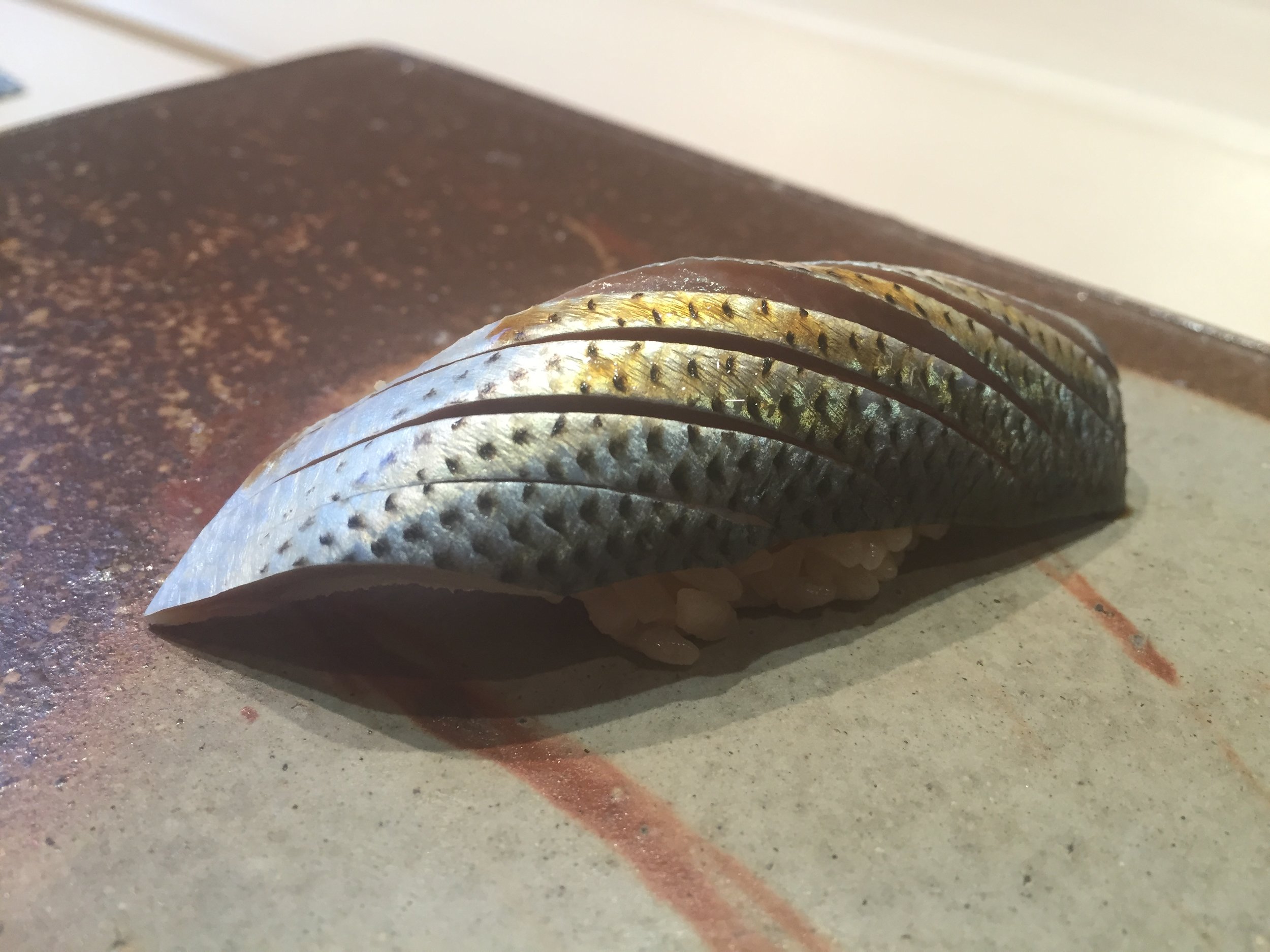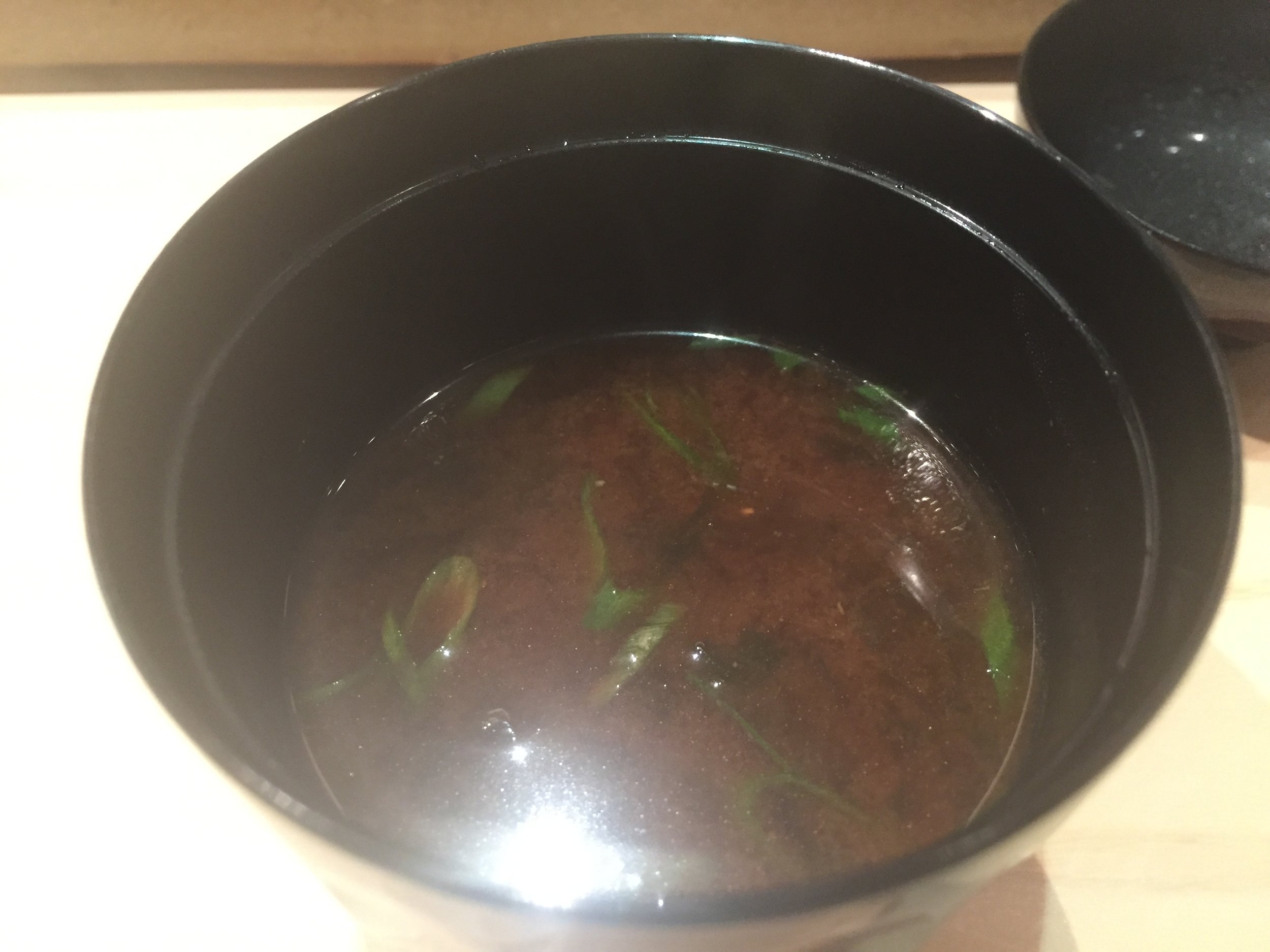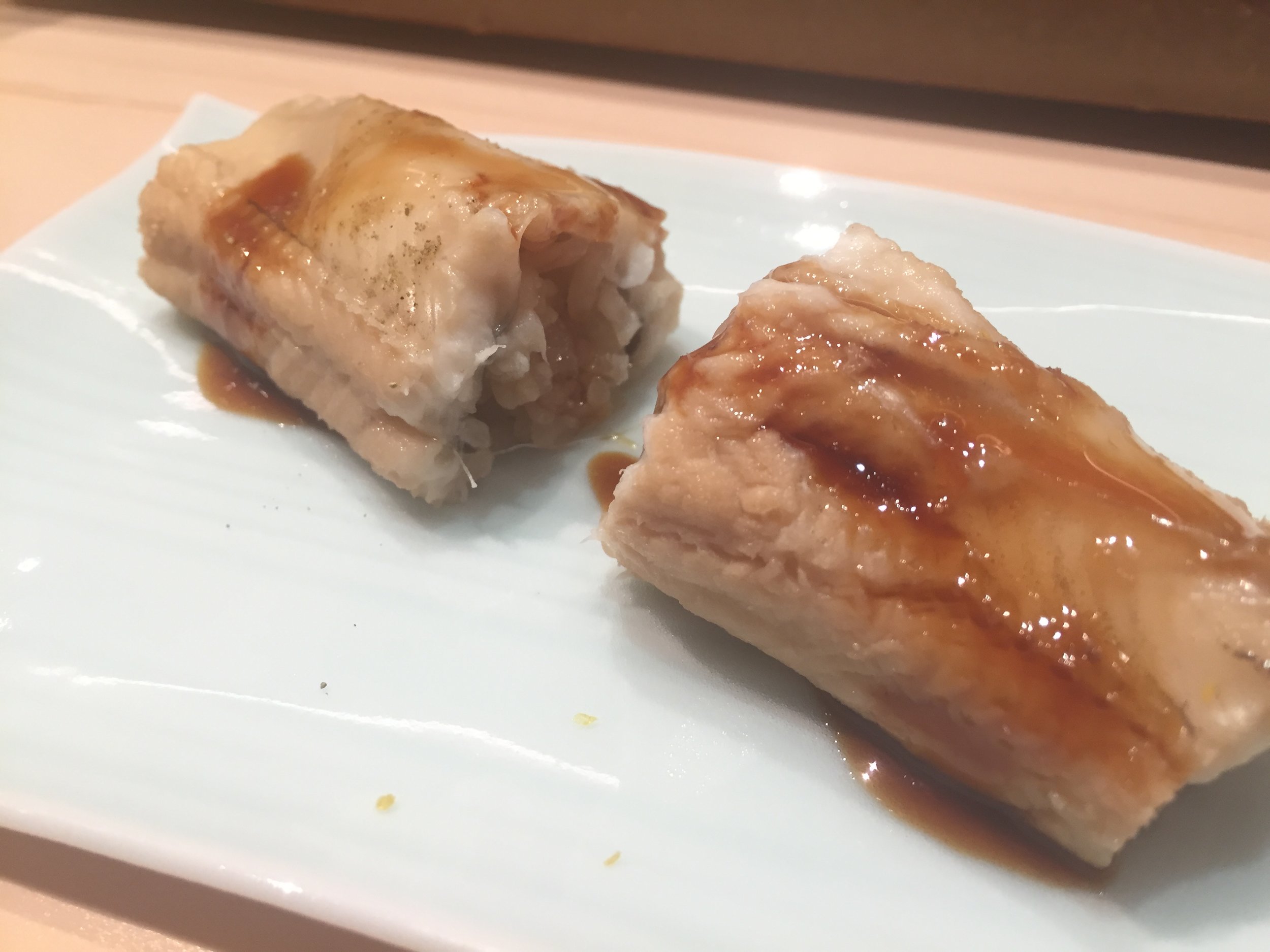- Cost: $400/person, before drinks, tax, tip
- Size: 15 seats at counter, plus tables
- Style: tsumami + sushi omakase
- Reserved: 2 weeks in advance
The phenomenon of high-end restaurants that originate in one global city and are exported elsewhere is not unique to Japanese cuisine (for example: Carbone, one of NYC's most highly-regard American-Italian restaurants, has a very successful Hong Kong outpost). But many established Japanese restaurant brands are particularly laser-focused on preserving the standards of their original shops (or honten) when new locations are opened abroad. As a case-in-point, it took famous tonkotsu ramen chain Ichiran nearly eight years of decision-making before they could finally open in Brooklyn.
This is certainly true in the case of high-end sushi chain Ginza Onodera which boasts locations in Tokyo, London, Paris, Shanghai, Honolulu, and now, New York (a Los Angeles location is also opening soon). All chefs train first at the Tokyo honten before opening new branches, and there is particular focus on sourcing wild, seasonal neta, much of it direct from Japan. This last feature results in the very-Ginza-level price point described above. While a $300-400/head omakase meal may cause sticker shock in the US, these price levels are not unusual at sushiya in international cities like Hong Kong, Bangkok and Singapore that insist on competing with Tokyo sushiya to source top neta direct from Tsukiji. It is really only novel in the US because US sushiya tend to utilize fish from all over the world (such as maguro from Spain or Canada, or hirame from Long Island) and even when sourcing from Japan, may rely heavily on farmed rather than the prized wild fish trafficked by the most highly-regarded export companies. To put it another way, a dogmatic focus on wild neta at peak shun (seasonality) has, partially for cultural reasons, been a lesser focus amongst US diners versus affordability. But with current explosion of high-end sushiya in the US and New York in particular, this is changing.
With this in mind, it should come as no surprise that Onodera's New York branch features arguably the highest-quality neta available in the US. It is typical to find items there that are all but impossible at other US sushiya (again, partially driven by the price point), such as early-season tokishirazu (large chum salmon) or matsukawa karei. A few months ago, it was the only place in NYC where you could consistently find aji from Awaji Island, one of the most famous source regions for this fish at its peak fattiness during the summer. Likewise, this past December, it was the only New York sushiya offering maguro from Oma, the most prized origin point for tuna at its peak fattiness during the wintertime.
But there is more to Onodera than simply top-quality neta - indeed, the fact that a higher price point can source more expensive fish shouldn't really be very surprising. Onodera is one of the few US sushiya I know of focusing on shari that is strongly flavored with akazu with a notable vinegar tone (Yoshizumi is another). While this style is currently quite fashionable in Tokyo, some American diners find the stronger vinegar taste distracting or too sour, and some sushiya are afraid they might scare away customers by taking such a leap. In my opinion, it is a welcome addition in the US, as shari with notable distinct character is sometimes difficult to come by in this country.
Though Masaki Saito, the chef at Onodera New York, is only in his late-twenties, he brings a wealth of experience from his early days training in Hokkaido as well as previously opening the Onodera branch in Shanghai. And what he delivers stylistically is indeed unique and interesting. For example, rather than searing some kinmedai to amplify its fat and oil (as many sushiya do), he ages it a week or more and then cures it konbujime-style, firming its rich flesh and concentrating the flavors beyond the simple sweet taste of fat. And precision is at a level that is rare to find in the US: to maintain consistency, shari is only delivered in batches large enough for a few rounds of nigiri. When fish are grilled (such as kamasu or kinki), they are not blasted with a gas blowtorch, but instead skewered over charcoal.
While dinner at Onodera necessitates an expense account, a special occasion, or both, lunch (at $130/person) is a relative bargain. It is in some respects, both in form and substance, the closest one can get to Japan at a US sushiya, for all the reasons I've outlined above. I look forward to continuing to visit to observe Saito-san's evolution as a rising star itamae.



























